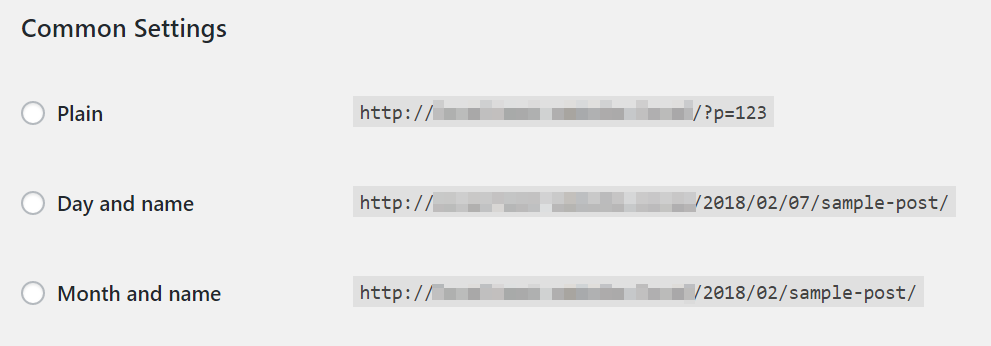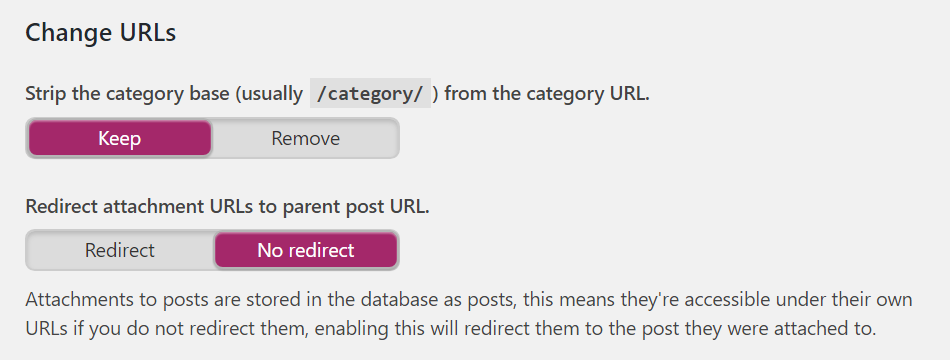What Are WordPress Permalinks (And Which Structure Is Right For You)?
You might have noticed that certain websites structure their URLs in specific ways. Some use random strings of numbers or letters to identify posts, whereas others (like us) opt for descriptive links. Either way, these URLs are referred to as ‘permalinks’, and the way you choose to structure them is more important than you might imagine.
Some platforms, such as WordPress, use vague permalink structures by default. However, you can change that quite easily. If you know what your options are, all it takes are a few clicks to pick a structure that works better for you and your visitors.
In this article, we’ll talk about what permalinks are and why the structure you choose matters. Then we’ll teach you how to change your WordPress permalink structure, and introduce you to all the options the platform offers. Let’s get to work!
What Permalinks Are (And Why The Structure You Choose Matters)

As the name implies, permalinks are the permanent, static URLs your website assigns to specific pages and posts. For example, this page’s permalink is:
www.a2hosting.com/blog/wordpress-permalinks
The first part of the URL is always the same on a particular website. What changes is the portion at the end, which is the ‘slug’ of the URL. In this case, that’s wordpress-permalinks. When we talk about changing the structure of your permalinks, we’re mostly referring to the slug.
Here’s why choosing your permalinks carefully matters:
- Descriptive slugs are more informative: By default, WordPress uses strings of numbers for your post slugs, which don’t tell users anything about the content.
- Specific structures offer Search Engine Optimization (SEO) advantages: For example, using your keyword as a part of your slug may boost your rankings in search engines.
- Some structures are easier to remember: Slugs with descriptive names tend to be easier to remember, which is always a plus.
As we mentioned earlier, WordPress’ default permalink structure offers a few choices. Fortunately, understanding and switching between these alternatives is remarkably simple.
6 WordPress Permalink Structures You Can Choose From
WordPress offers you a couple of options for how you alter your permalink structure. The easiest method is to go to Settings > Permalinks in your dashboard. You can simply choose an option from the list, and then click the Save Changes button:

You can also use a plugin such as Yoast SEO, which provides you with several options to change your permalink structure:

Keep in mind that it’s often not a good idea to change your site’s permalink structure if it’s been up and running for over six months, as that can cause broken links. It’s still possible to do this successfully, but it requires a bit more effort.
Now, let’s take a look at the permalink options offered by WordPress.
1. Plain
The Plain structure is the one WordPress uses by default. With it, your posts and pages are identified by their IDs:
http://examplewebsite.com/?p=123
In this case, the slug is a simple number. The structure is very clean, but it doesn’t tell you anything about the link’s contents. Generally speaking, it’s not a good idea to use numerical strings as your slugs, since they provide you with no SEO benefits.
However, using numerical IDs does make sense in a few cases. For example, with large online stores, it may not be feasible to create individual slugs for each product, so using IDs might be preferable.
2. Day and Name
The Day and Name format identifies your posts according to their titles and when they were published:
http://examplewebsite.com/2018/02/07/sample-post/
From an SEO perspective, this format works because it provides visitors with valuable information – the name of the post they’re about to read and the exact date when it was published. The latter can even help them decide if a post is worth reading or not. Posts that are as recent as possible are less likely to be outdated, so having that information available at a glance can be helpful for readers.
That benefit can work against you, however, since you may scare some visitors away from old content. For example, we don’t include exact post publication dates in our permalinks, but we do show the post date on the page.
3. Month and Name
This format is basically the same as the previous option. The difference is that it only includes the year and month, not the day:
http://examplewebsite.com/2018/02/sample-post/
The same pros and cons we covered for the previous format are also relevant here. If you’re set on including the date of publication as part of your permalinks, we recommend using the Day and name option, since it’s slightly more descriptive.
4. Numeric
The Numeric permalink structure also identifies your posts by their IDs. In this case, however, each slug is preceded by the archives prefix:
http://examplewebsite.com/archives/123
As far as upsides go, these types of URLs tend to be compact. However, they’re not particularly memorable or descriptive, much like the Plain format. The archives prefix may also lead some visitors to think they’re reading outdated content, which makes this structure difficult to recommend.
5. Post Name
The Post Name format simply includes your post’s title as its slug, like this:
http://examplewebsite.com/sample-post
As far as WordPress permalink structures go, this is our favorite, and the one we recommend for most sites. The upsides are plenty – you get a short URL that showcases your post’s title, which makes it more memorable and descriptive.
You can also include your primary keyword into the post’s title and its slug, which benefits its SEO. The only time you wouldn’t want to use this structure is if dates are very important to your content (for instance, if you’re running a news site), or if you want to create a custom permalink structure.
6. Custom Structure
Finally, WordPress also enables you to create your own permalink structure. To that end, it provides you with multiple tags you can add in any order you want to your URLs, as you can see in the example below:

The upside to this approach is that you can craft any type of permalink structure you want. While most people end up using one of the platform’s default structures successfully, this can be an intriguing option if you want to display specific information in your slugs.
Conclusion
Your permalink structure might seem like a small thing. However, certain URL formats are easier to read and remember, and can also provide you with SEO benefits. Descriptive page slugs also look much better than strings of numbers, so there’s an aesthetic component to your decision as well.
WordPress makes it simple for you to update your permalink structure whenever you want to. However, the earlier you do it, the better it is for your website. We recommend using the Post Name permalink structure in most cases, since it provides readers with information about each page’s contents. Moreover, not including a date in your URLs can be beneficial if you want your content to remain evergreen.
Image credit: Pixabay.
